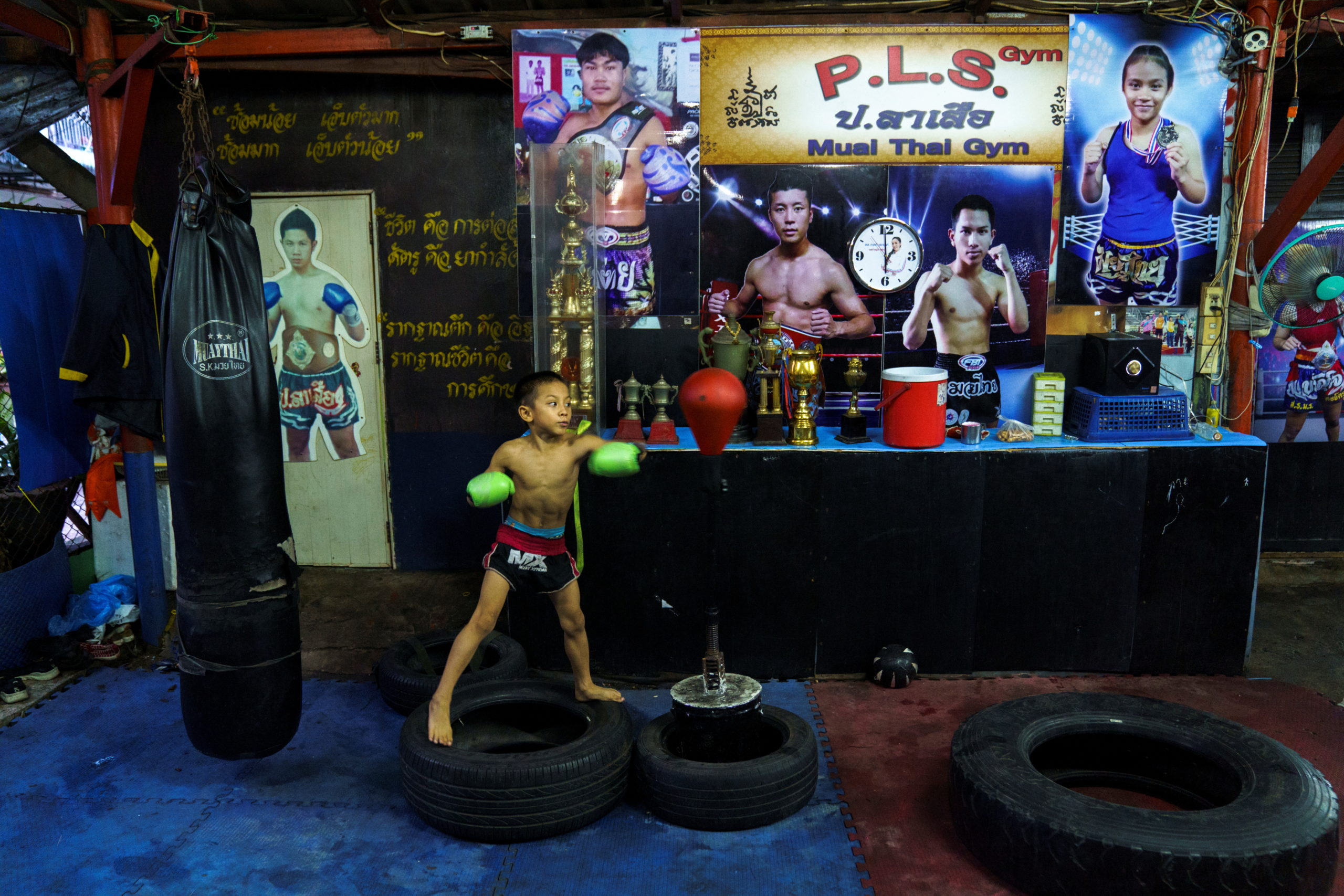
Pornpattara Peachurai, known as Tata Por Lasua as his fighter name, 9, a child Muay Thai boxer, trains at a gym in Bangkok, Thailand, October 3, 2020. “All the money from boxing, the regular payment and the tips, it all goes to mum,” said Peachurai. “I’m proud to be a boxer and to earn money for my mum.” REUTERS/Athit Perawongmetha
BANGKOK —Nine-year-old Thai kickboxer Pornpattara “Tata” Peachaurai is eager to get back in the ring after coronavirus curbs brought his fight season to a halt more than five months ago. The money he earns is vital income for his family.
“All the money from boxing, the regular payment and the tips, it all goes to mum,” said the lean young fighter.
“I’m proud to be a boxer and to earn money for my mum.”
Tata’s last fight was in October, before a second COVID-19 outbreak in Thailand shut down sports events as bans on large gatherings were reimposed.
“I cannot box. I haven’t practiced boxing, too … I help my mum sell things.”
Tata lives with his mother and 16-year-old sister, Poomrapee, who is also a boxer with the national youth team.
The family is banking on Tata’s earnings as a way out of poverty and hopes he can make it as a professional Muay Thai fighter, or represent the police or army in the ring and be rewarded with higher ranks and bonuses.
“He usually gives his income to mum,” said Tata’s mother, Sureeporn Eimpong, 40.
“Sometimes he asks for some toys after a fight.”
HARMFUL EFFECTS
Pornpattara Peachurai, known as Tata Por Lasua as his fighter name, 9, a child Muay Thai boxer, has his temperature checked before entering his school in Bangkok, Thailand, October 7, 2020. REUTERS/Athit Perawongmetha
Child fights in Thailand can be as popular as adult bouts and take place at tournaments, festivals and temple fairs. There are an estimated 300,000 boxers under the age of 15, according to the Professional Boxing Association of Thailand.
Some medical experts are calling for a ban on boxing for minors, though, saying it could cause stunted growth, long-term neurological problems, brain damage and disability.
Parental consent is the only present requirement for child boxers.
“I’m not worried about boxing,” said Sureeporn, adding that boxers were trained to protect themselves.
“There are not a lot of injuries in child boxing. I am confident in the system.”
But the system doesn’t always work.
In 2018, Tata fought in the same tournament where a 13-year-old boy died of brain hemorrhage after being knocked out in the ring. Sureeporn said the referee had been too slow to intervene.
Adisak Plitponkarnpim, director of the National Institute of Child and Family Development at Thailand’s Mahidol University, is part of a research team that did brain scans on 250 child boxers, some of which showed extensive damage that could impact brain development and intelligence levels.
“Boxing creates brain injury as we can see clearly in the older boxers,” Adisak said.
“The parents who rely for income from their kids at the age of eight or nine years old should ask themselves what they are actually demanding from them.”
Some Thai lawmakers have sought to ban boxing for those under the age of 12, but a draft bill failed to reach parliament and would likely have faced resistance because of the popularity of child fights and the revenue they generate.
Sureeporn said boxing was her son’s life.
“I’m from the lower class and I just make enough money to survive and don’t have savings or fancy homes,” she said.
“The future of Tata is in boxing.”
RELATED STORIES